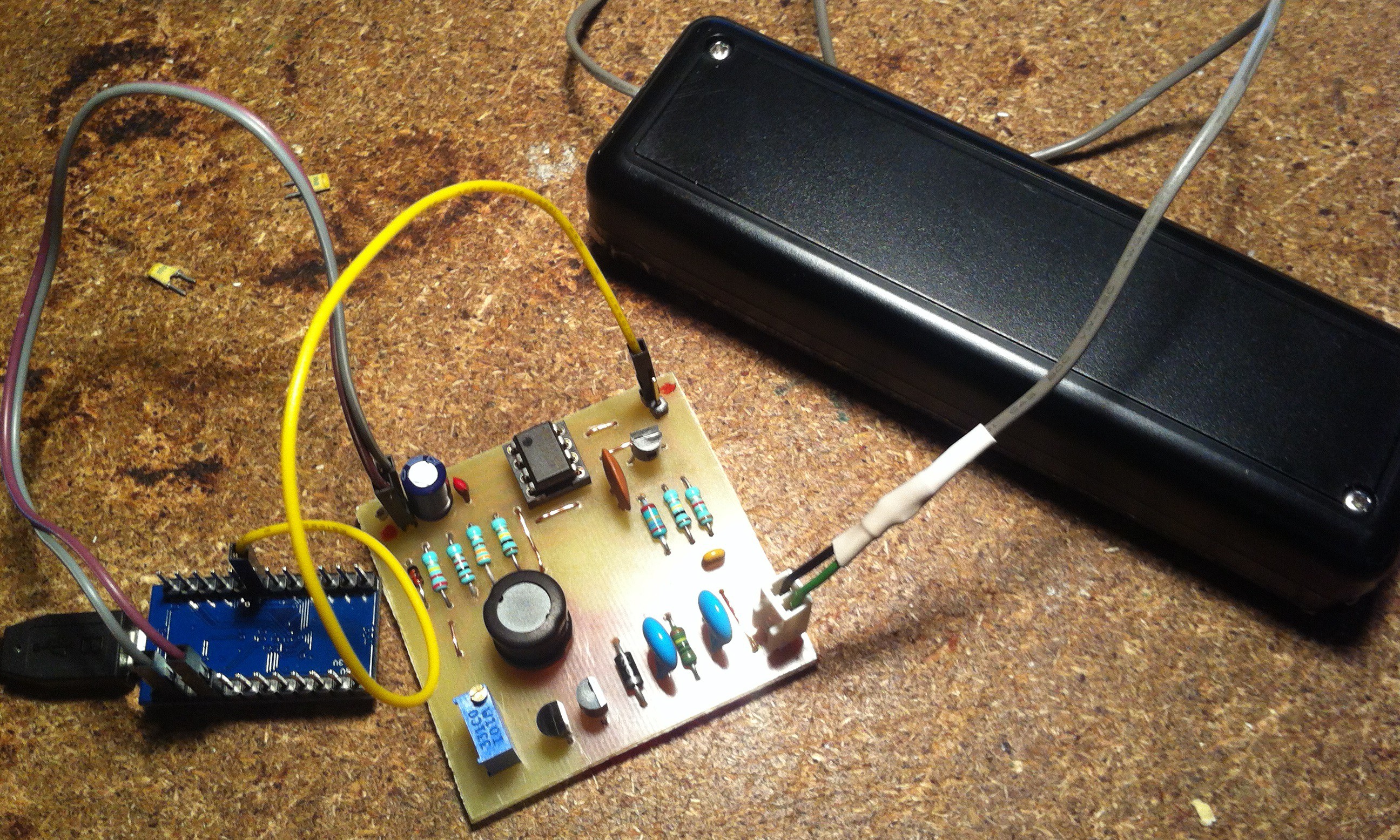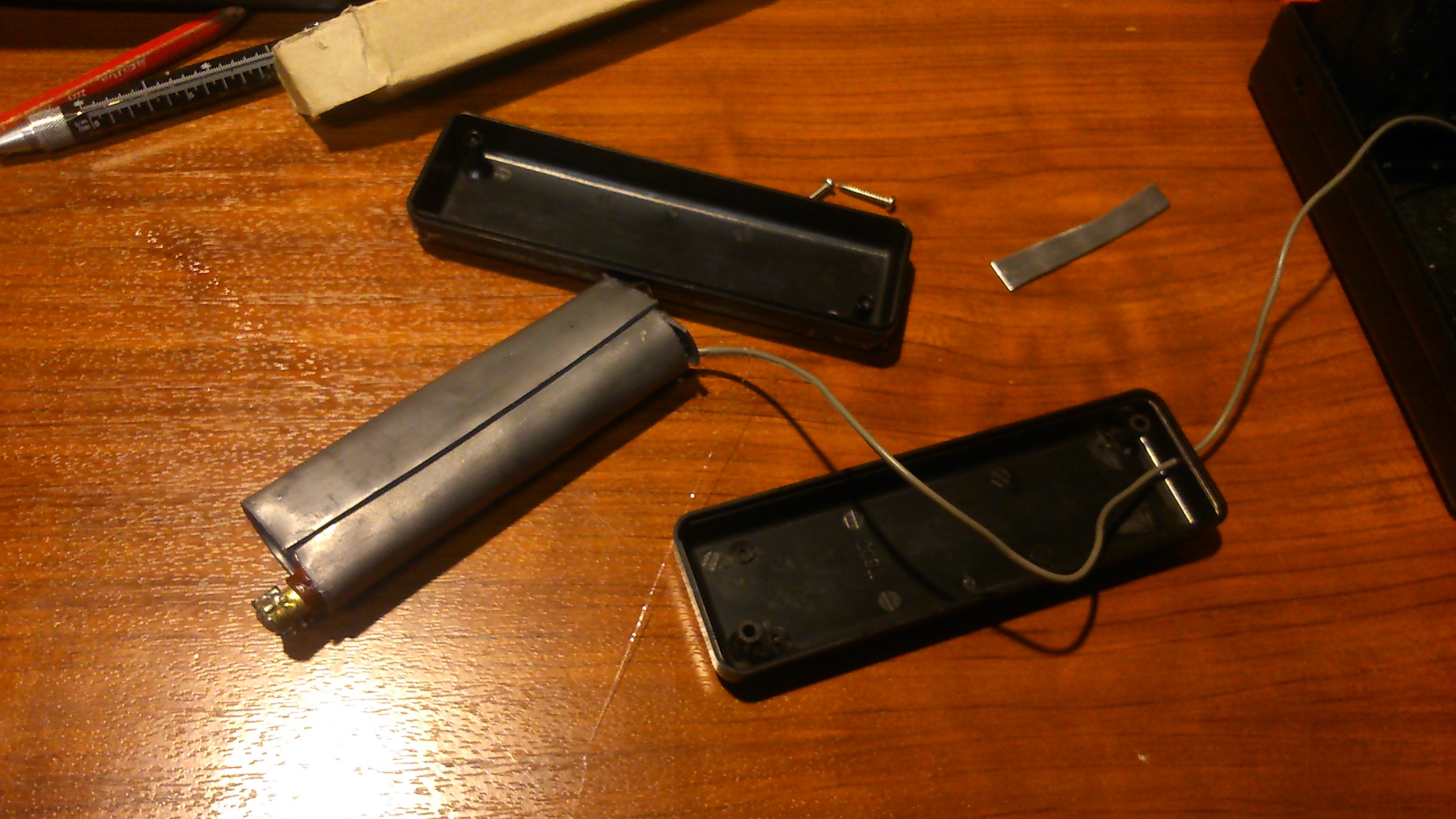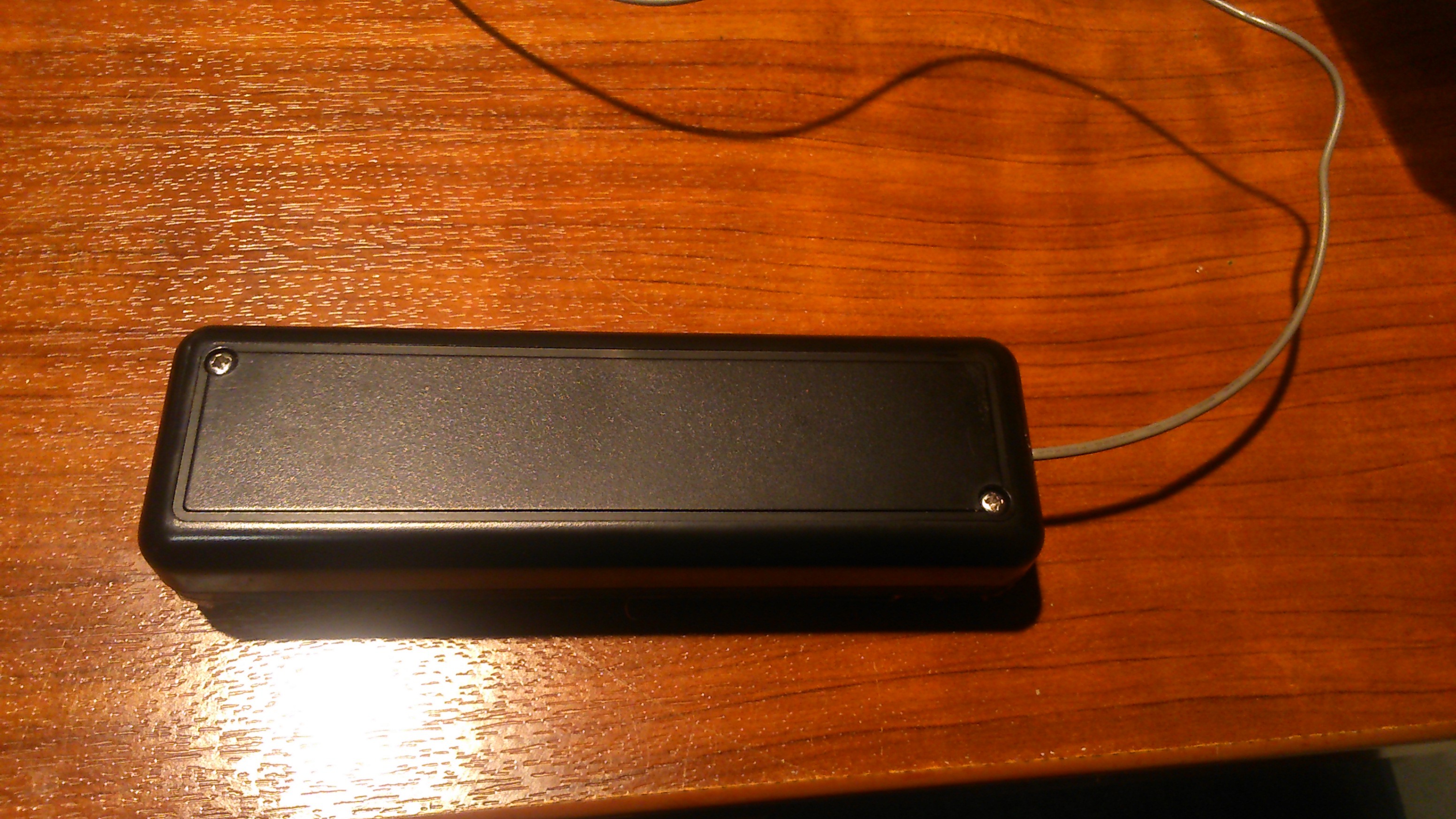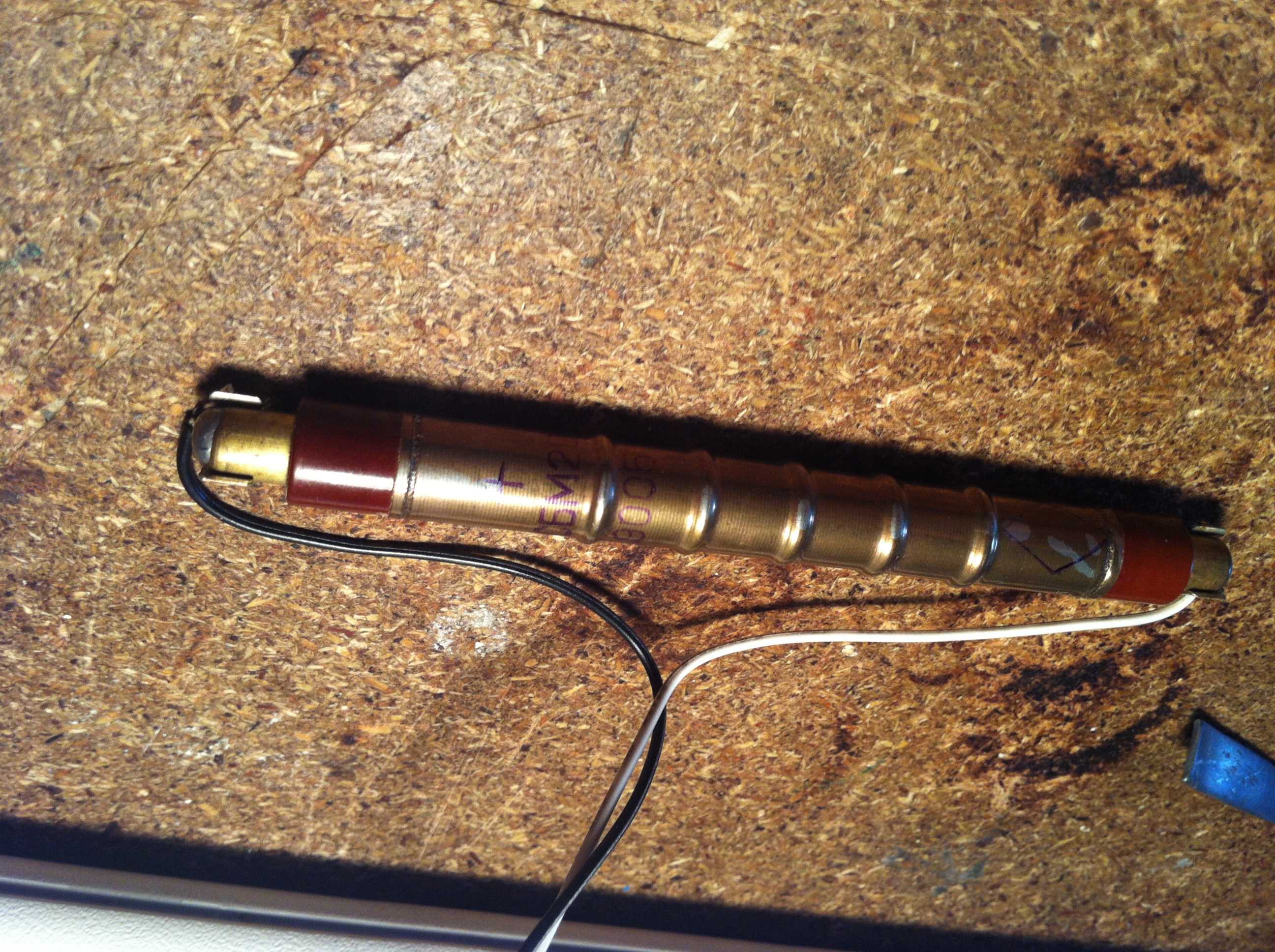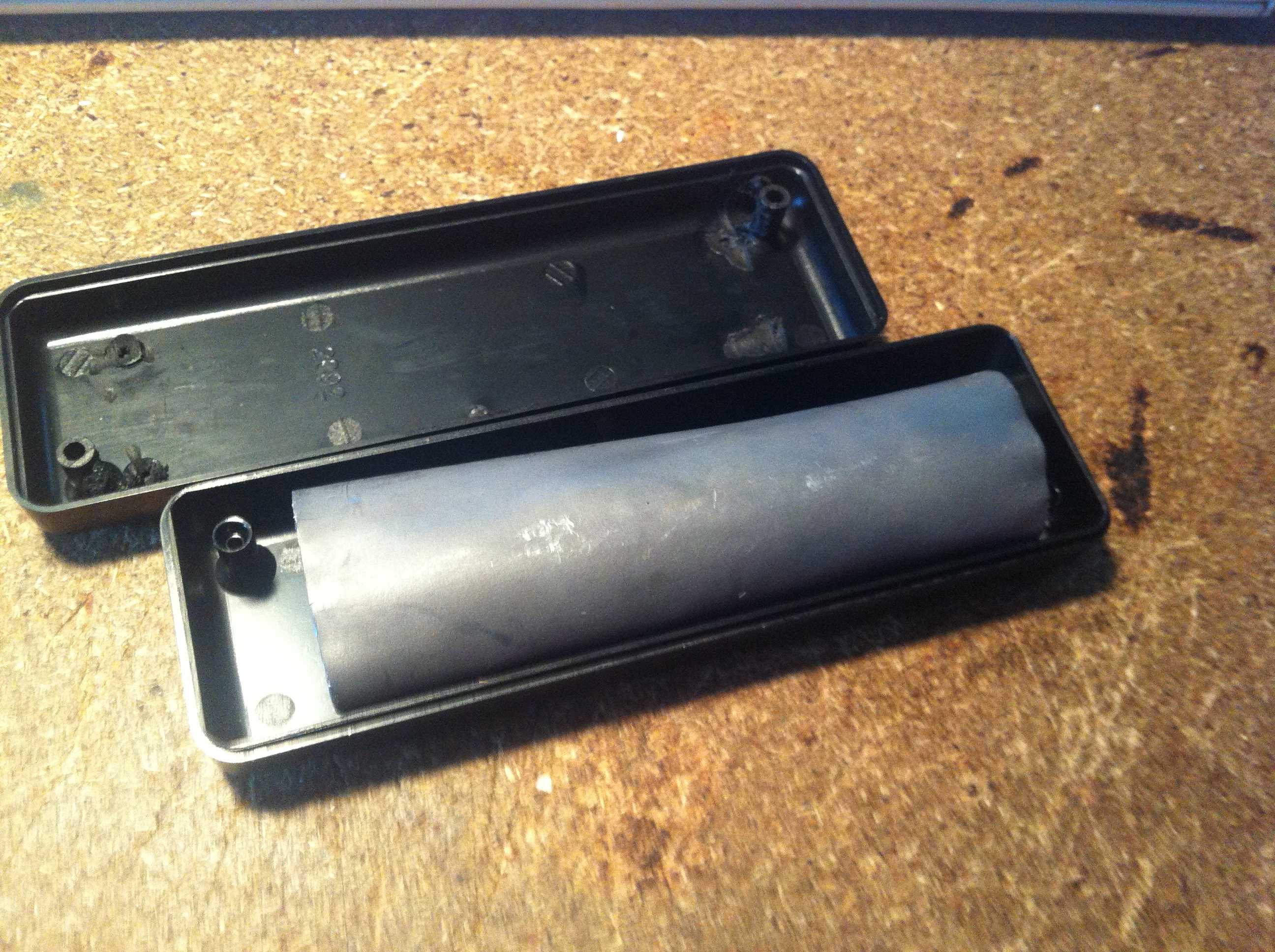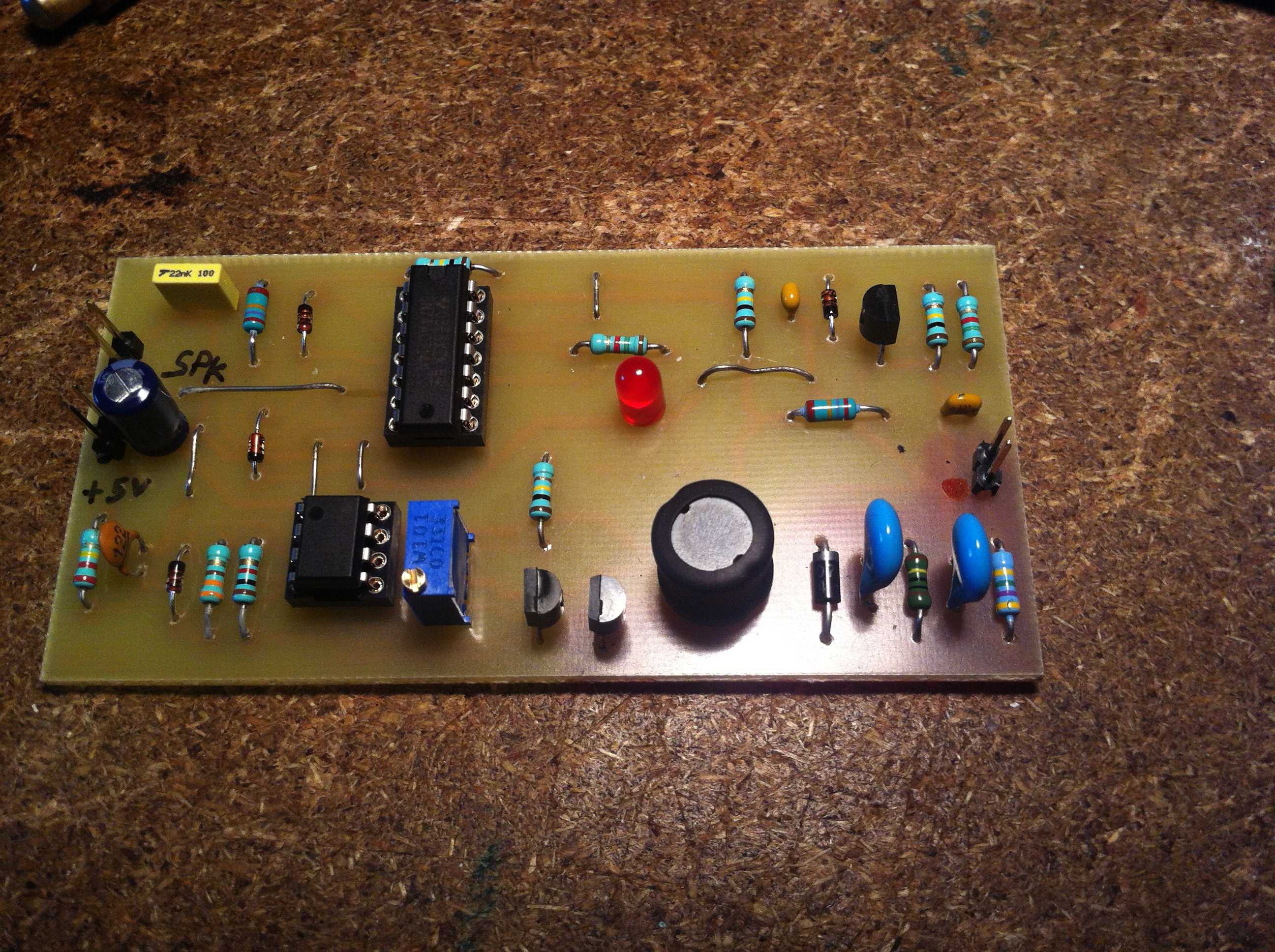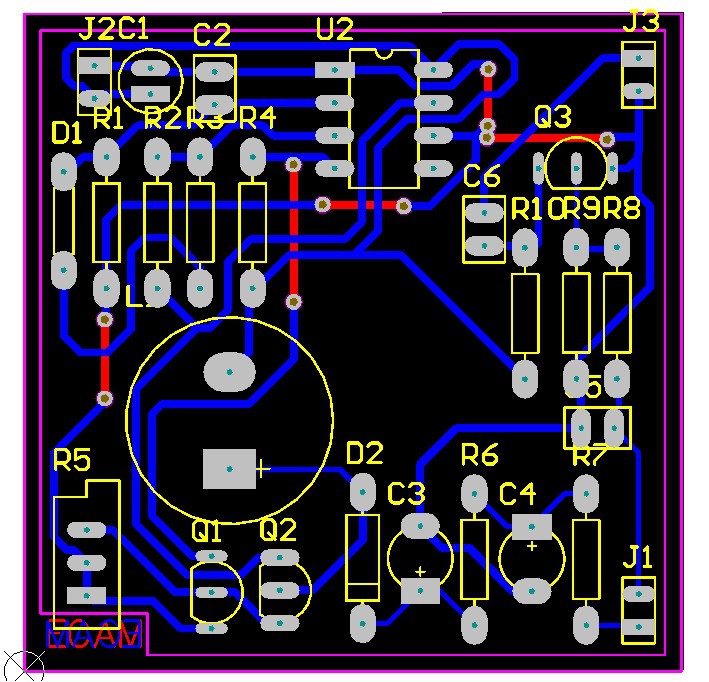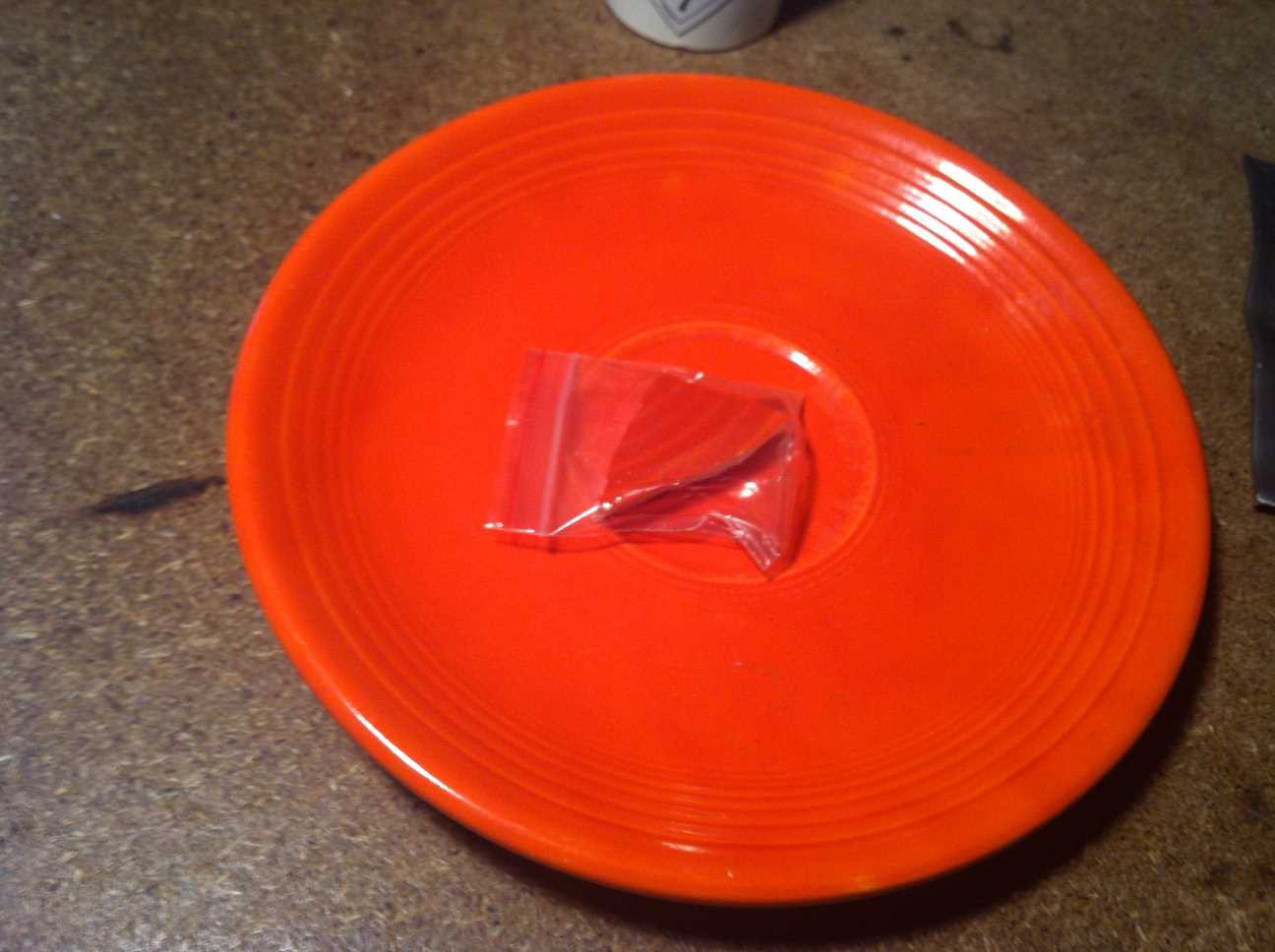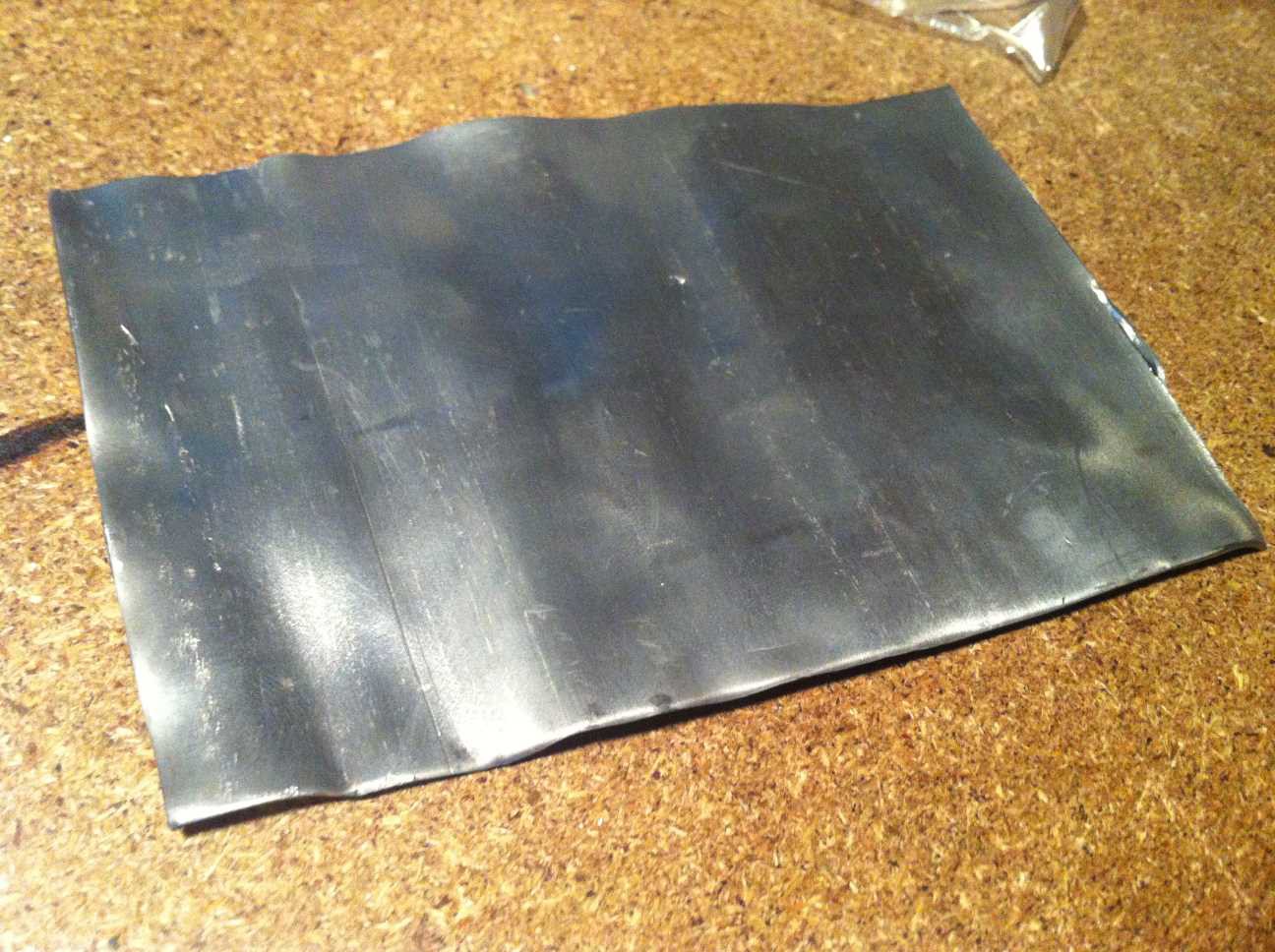-
Project video
08/15/2015 at 22:47 • 0 commentsI made a small descriptive video for my project! A picture is worth a thousand words, but what about moving images? ;)
-
We've got some numbers!
03/29/2015 at 20:10 • 0 commentsAll right, the PCB is done, the holes drilled, and the components soldered in place. After some testing, I plugged the thing in a 5V supply, and Tada! Got HV on the Geiger input!
I quickly programmed a small sketch that does the math and counts the pulses in the Arduino Leonard. The binairy data is sent through the serial port, and arrives on my computer. I'll post the sketch later on.
For now, it seems that the numbers are random, but I'll need to analyse them more thoroughly...
-
Shielding the source and tube
03/25/2015 at 12:28 • 0 commentsI've finished printing the circuit board, it should be completed by this evening.
In the meantime, I made some progress on the source.
The Geiger tube is wrapped around the lead shielding with the radioactive source. I closed the ends by gluing lead strips around the edges, and used a lab NaI scint counter to check for leakage. Nothing seems to get out of it, we'll see in the long term how the shielding holds.
A small, self-contained source plus tube!
-
Yay! Progress!
03/21/2015 at 16:06 • 0 commentsSo... I've decided to use another Geiger Tube. Instead of using the SI-3BG, which isn't very sensitive, I'll use the classical СБМ-20 (SBM-20), it'll generate more counts, but will need a bigger enclosure.
The first enclosure (which will hold the radioactive sample, shielding plus Geiger tube) is a small plastic box I bought on eBay for about 5 bucks. The tube fits inside nicely!
I'm still working on the 400V power supply. I've already made a first try which includes the clicker (copied directly from Brohogan's design), but I'll chop off that part in the next version, andjust keep the power supply and the microcontroller interface...![]()
That circuit board should be ready by next week!
-
First thoughts
03/11/2015 at 10:24 • 0 commentsThe first thing I want to care about is the most critical part: the radioisotope and Geiger tube, plus shielding.
My choice of isotopes is pretty limited:
-U-238, contained in some old Fiestaware plates;
-Am-241, from smoke detectors;
-Th-232, from lantern mantles;
-Ra-226, from radium watch hands.
My choice is mainly dictated by how safe I want it to be: nothing in a powdered form, I want a solid source, that won't scatter easily if breached.
The Ra-226 is out of the question, as it is simply painted on zinc sulfide, the contamination risk is way too high.
Am-241 emits lots of alpha, but much less gamma, so not that great, since my GM tubes are only beta and gamma sensitive. Besides, there's a contamination risk should the source be released from its bracket.
I'm still hesitating on Th-232 or U-238: the lantern mantle has the advantage of being easy to wrap around the tube, but can scatter if burned (the cotton burns out, leaving a brittle ceramic structure that breaks easily and gets in the air, causing a serious contamination danger). On the other hand, the Fiestaware plate chip is solid and shouldn't scatter in case of a fire, but is much hotter (read radioactive) than the other samples I have; more shielding may be required.
![]()
As for the Geiger tube, I'll get started with a си-3бг (SI-3BG) beta and gamma sensor. It isn't very sensitive, that's why I need a source to get enough counts and use the thing. However, this tube is very small, so it should be easy to fit it in a small leaded enclosure.
I will use lead for shielding. As Th-232 and U-238 does not emit enough beta to create significant bremsstrahlung radiation, especially with the weak sources I use. Actually such shielding may look like overkill, but I want this thing to fit inside a pocket! I don't want to detect anything outside the casing.
Nuclear Random Number Generator
A self-contained, true random number generator which uses radioactive decay as an entropy source.
 M.daSilva
M.daSilva